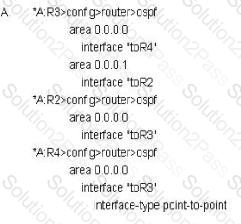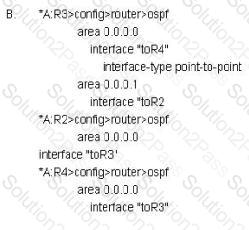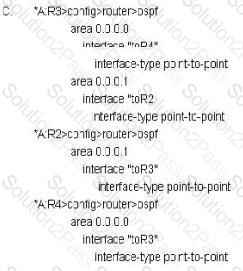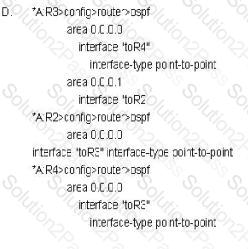4A0-101 Nokia Alcatel-Lucent Interior Routing Protocols and High Availability Free Practice Exam Questions (2025 Updated)
Prepare effectively for your Nokia 4A0-101 Alcatel-Lucent Interior Routing Protocols and High Availability certification with our extensive collection of free, high-quality practice questions. Each question is designed to mirror the actual exam format and objectives, complete with comprehensive answers and detailed explanations. Our materials are regularly updated for 2025, ensuring you have the most current resources to build confidence and succeed on your first attempt.
Which LSA type is not found in point-to-point only OSPF networks?
Which of the following is FALSE regarding link-state protocols?
Click on the exhibit.

A service provider is deploying a 6 over 4 tunnel to connect a customer's corporate IPv6 network to all devices at the branch office as shown in the exhibit.
Which command is used to create the route to the branch office network on PE1?
Click on the exhibit.

What type of OSPFv3 LSA is shown?
Click on the exhibit.
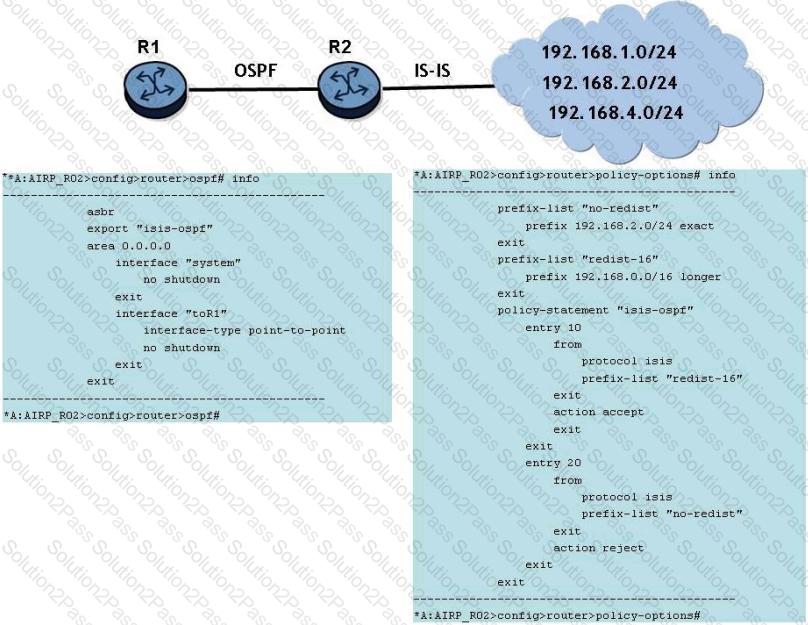
Router R2 learns the networks shown from IS-IS. Router R2 is configured to redistribute routes from IS-IS to OSPF as shown. Assume the OSPF and IS-IS adjacencies are operational.
How many OSPF Type 5 LSAs will router R1 receive from router R2?
Click on the exhibit.
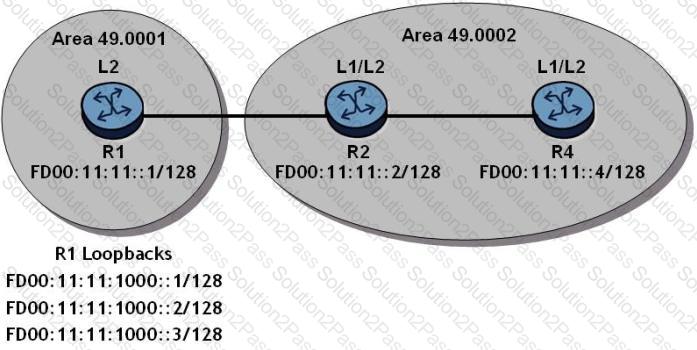
Router R1 distributes its globally routed address and its loopbacks into IS-IS. Routers R2 and R4 have their globally routed addresses in IS-IS.
How many routes will router R4 have in its IPv6 route table?
Which field of an IPv6 header indicates an upper layer protocol carried in the packet?
Which of the following about IS-IS level hierarchies is FALSE?
Click on the exhibit.
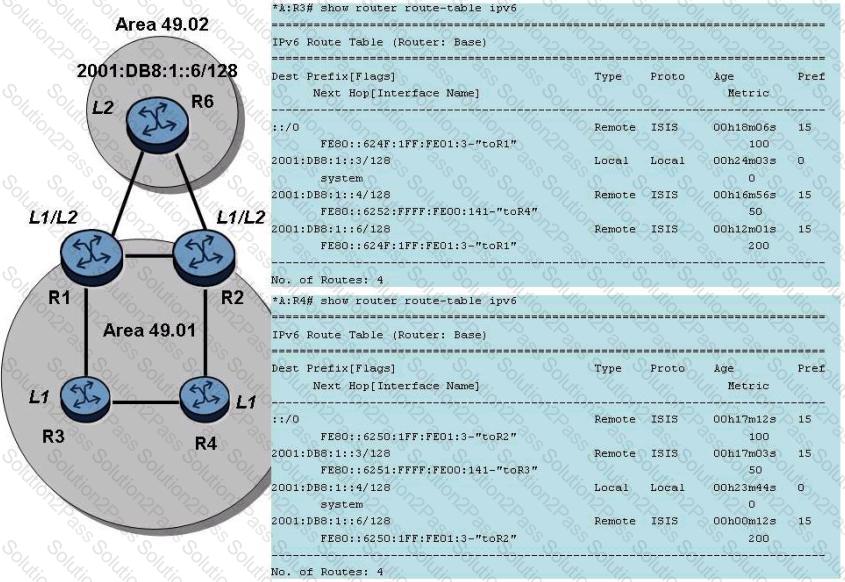
Based on the topology shown and the route tables of routers R3 and R4, which of the following is correct?
Click on the exhibit.
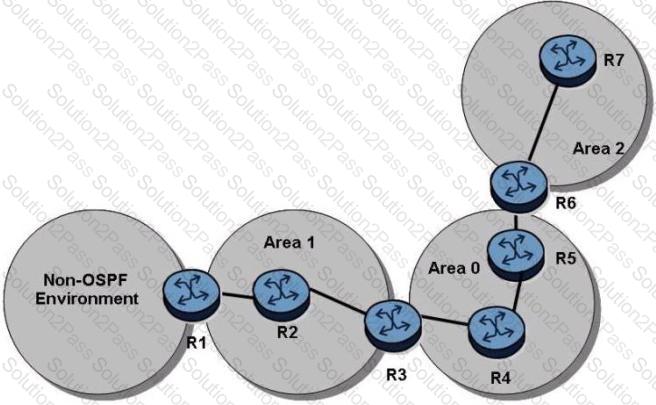
In the topology shown, router R1 is an ASBR configured to export external routes to OSPF. There are no stub or NSSA areas. Which of the following regarding LSAs is TRUE?
Click on the exhibit.
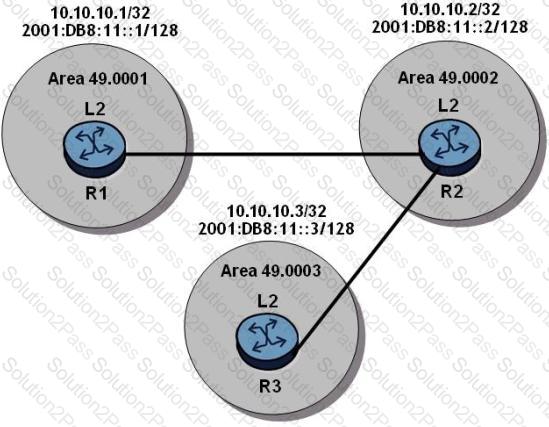
The routers have an established IS-IS L2 adjacency on which IPv4 system addresses are exchanged. An operator successfully configures multi-topology IS-IS routing so that the IPv6 system addresses are also exchanged between routers.
After IPv6 has been configured, which of the following is TRUE?
Which of the following concerning OSPFv3 is TRUE?
Which type of OSPF LSA has the following characteristics: It is flooded only within the area it originates from and can be originated by any OSPF router within the area (including non-DR routers).
Click on the exhibit.
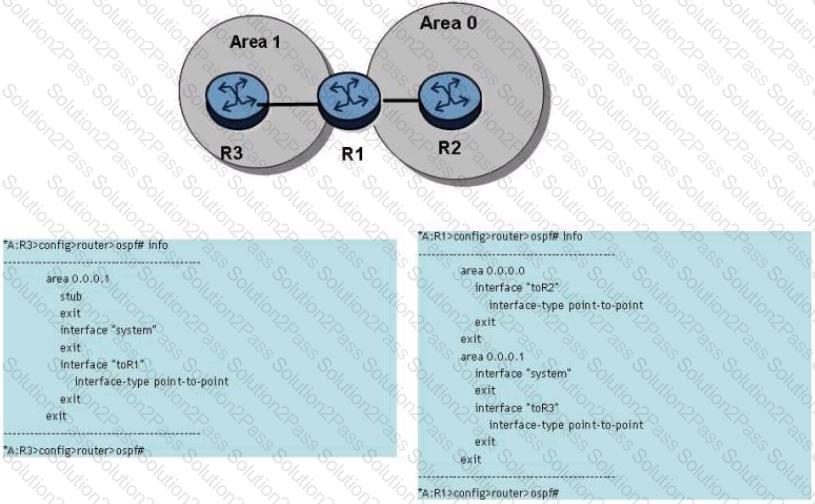
The OSPF adjacency between routers R1 and R3 does not come up.
Which of the following is a possible solution to the problem?
A new router is added to a broadcast network. What is used by IS-IS as the tie breaker for selecting the DIS if the priorities are the same?
Click on the exhibit.
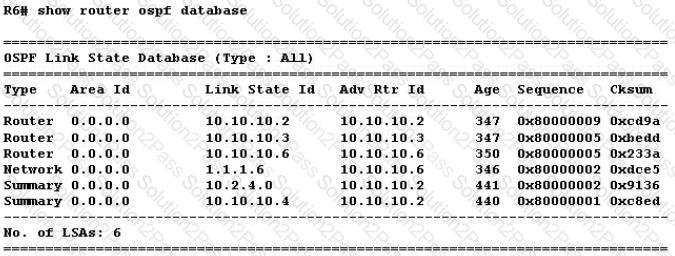
Given the output shown, which router is the ASBR in this network?
Which of the following about 6over4 is FALSE?
What is the default preference value for a static route in the Alcatel-Lucent 7750 SR?
What value should the AFI be set to for locally administered addressing?
Click the exhibit button.
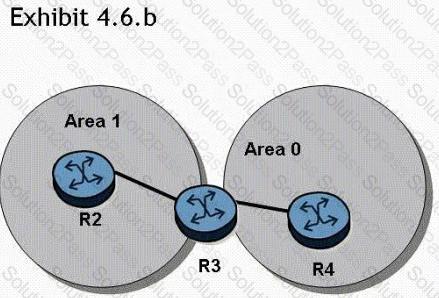
Which of the following would correctly configure routers R2, R3, and R4?
